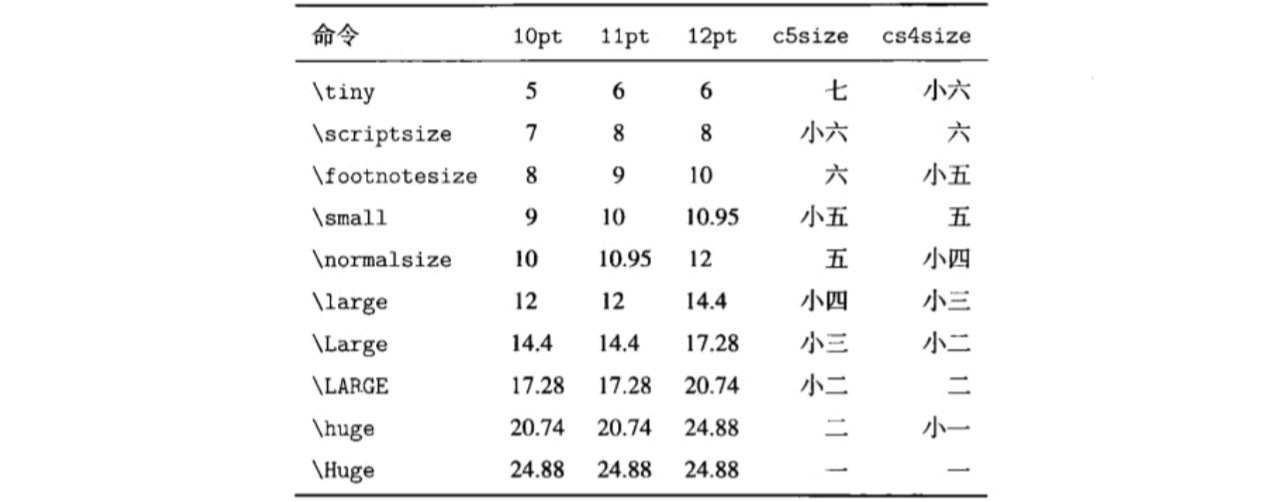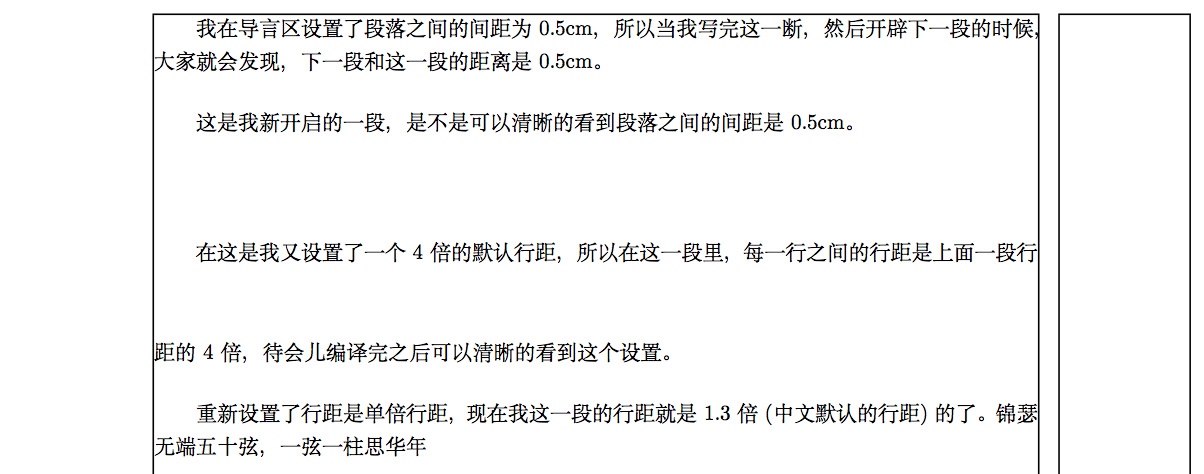Font Size, Horizontal Spacing, and Vertical Spacing #
Author: Erhua
Keywords: font size, horizontal spacing, vertical spacing
In this section, we will discuss the size of fonts, measured in points (pt), as well as horizontal and vertical spacing.
First of all, let’s clarify that in LaTeX, line spacing and font size are directly related. When we set the font size, the basic line spacing (the distance between the baseline of one line of text and the baseline of the next line) will be set to 1.2 times the font size by default.
Locally Setting Font Size #
English Font Sizes #
Note: The sizes represented by the font size commands may vary depending on the document class and other factors, so they do not accurately represent the actual size of the font.
\tiny \scriptsize \footnotesize \small
\normalsize \large \Large \LARGE
\huge \Huge
\documentclass{article}
\usepackage{ctex}
\begin{document}
{\tiny Text} {\scriptsize Text} {\footnotesize Text} {\small Text}\par
Text {\large Text} {\Large Text} {\LARGE Text}\par
{\huge Text} {\Huge Text}
\end{document}

Link: Relation Between pt and Chinese Font Sizes
Chinese Font Sizes: #
The representation of Chinese font sizes is already included by default when we use the ctex document class or the ctex package, in the following form:
\zihao{1}
\zihao{-1}
\zihao{3}
\zihao{-3}
\documentclass{article}
\usepackage{ctex}
\begin{document}
\zihao{1} Text \par
\zihao{-1} Text \par
\zihao{3} Text \par
\zihao{-3} Text \par
\end{document}


Setting the Global Font Size #
We know that an article or a book usually has a dominant font and font size for the main text. The default options for font sizes are:
\tiny \scriptsize \footnotesize \small
\normalsize \large \Large \LARGE
\huge \Huge
We can redefine these commands to modify their default point values and change the global font size.
\renewcommand\normalsize{\fontsize{18pt}{\baselineskip}\selectfont}
Use the package \anyfontsize.
The \fontsize command takes two arguments: \fontsize{size}{interline spacing}\selectfont
Setting Vertical Spacing #
Setting Baseline Skip: #
To set the baseline skip, use the command \linespread{factor} (this command takes effect after the \selectfont command).
Here, the factor refers to the multiple of the baseline skip. The default baseline skip is 1.2 times the font size for English text and 1.3 times for Chinese text.
By default, for English text, the line spacing is 1.2 times the font size (1.2 X 1 = 1.2); for Chinese text, the line spacing is 1.3 times the font size (1.3 X 1.2 = 1.56).
Package: setspace
\documentclass[]{article}
\usepackage{ctex}
\usepackage[left = 30mm,right = 30mm]{geometry}
\setlength{\parskip}{0.5cm} % set paragraph spacing
\usepackage{showframe}
\begin{document}
I have set the spacing between paragraphs to 0.5cm in the preamble, so when I finish writing this paragraph and start a new one, you will notice that there is a 0.5cm spacing between the two paragraphs.\par
This is a new paragraph, and you can clearly see the 0.5cm spacing between paragraphs.\par
\linespread{4}\selectfont % set line spacing
In this paragraph, I have set a line spacing of 4 times the previous line spacing. You will see the effect of this setting after compiling.\par
\linespread{1.3}\selectfont
I have reset the line spacing to the default line spacing of 1.3 times the font size for Chinese text. You can see the line spacing of this paragraph has changed accordingly.
\end{document}

Vertical Spacing: (Experiment failed, reasons unknown) #
| Command | Description |
|---|---|
| \vspace{length} | Generates vertical spacing of “length” (but it has a major defect) |
| \vspace*{length} | Generates vertical spacing of “length” |
| \vfill = \vspace{fill} | Vertically fills the space evenly |
Note: The “length” parameter can be `\parskip